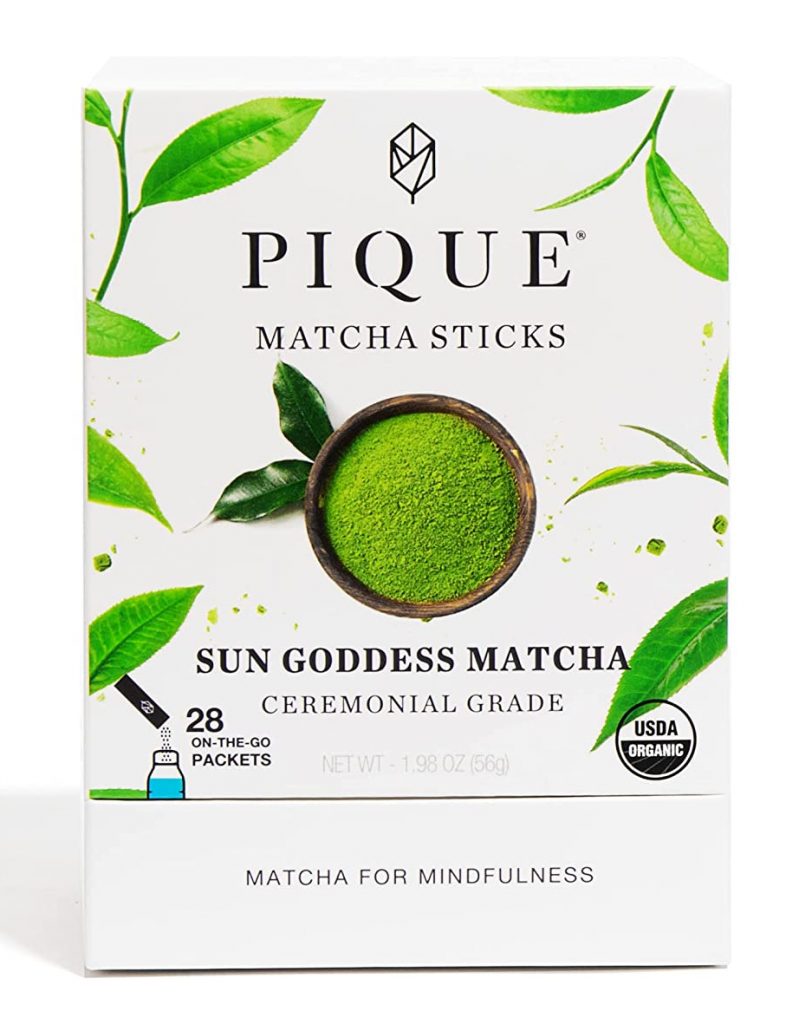Best Matcha Tea
Making matcha is a tricky process. While these finely-ground tea leaves have numerous health benefits, they’re like most other products in that there’s a clear difference between a high-quality product and a low-quality one. Fortunately, experienced drinkers can quickly taste the difference between good and bad matcha.
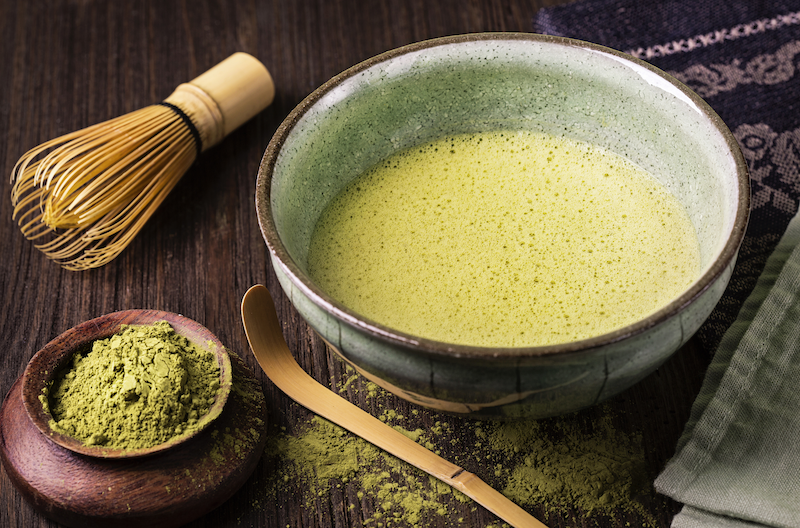
The Highest Rated Matcha’s According to Green Tea Connoisseurs
Here are our favorite matcha tea options.
#1 Tea Mind Body’s Organic Matcha Green Tea
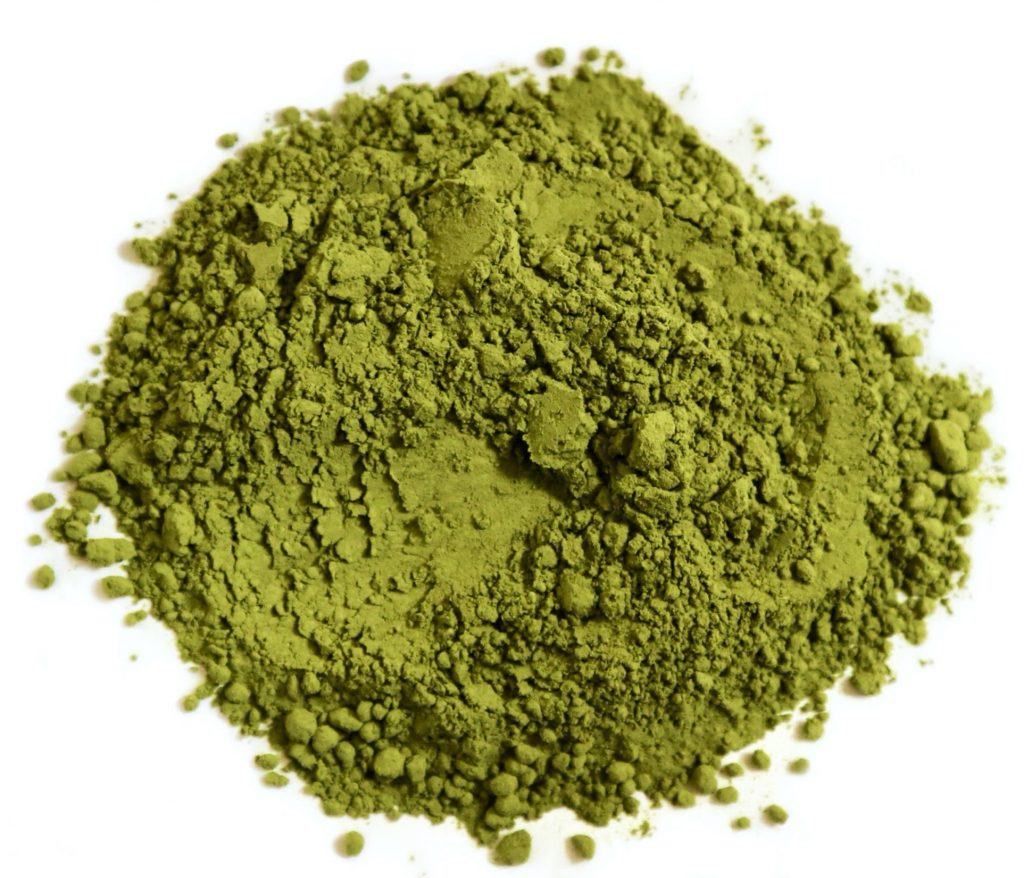
This deceptively simple-sounding Chinese matcha is a flavorful stone-ground option available in 4 oz. and 1 lb. options (about 60 and 240 cups, respectively). Organic Matcha Tea Grade A is particularly suitable for daily drinking with the Usucha preparation method, as well as matcha lattes and other milk-based variations of the drink.
Tea Mind Body’s Organic Matcha Green Tea is a high quality matcha that has an excellent balance of price, quality, and overall availability. This organic matcha powder is slightly bitter, so you may want to add just a touch of sweetener to balance it out.
#2 Jade Leaf Second Harvest Culinary Grade Matcha
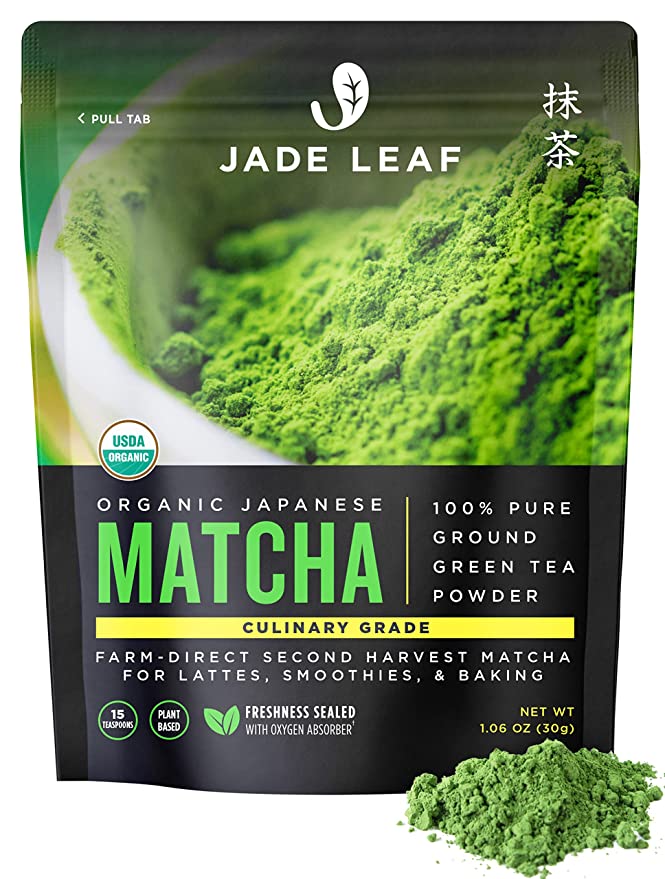
Jade Leaf’s Culinary Grade matcha is available in several sizes, from 1.06 ounces to 1 pound. It’s also available in a Ceremonial Grade Matcha variant, but we particularly recommend the Culinary Grade for mixing into smoothies and other products.
Jade Leaf’s matcha is a rare, 100% organic product mixed from leaves grown in the Uji and Kagoshima areas. The leaves are the second harvest for the culinary mix, which means they’re grown a little later in the year and have a slightly different flavor from the first harvest leaves.
Here, it’s important to emphasize the difference between Culinary and Ceremonial matcha. Ceremonial matcha tastes different than what you’ll find here, and most people agree it’s better. However, for a stronger flavor that matches tea cakes and other baked goods, this is a great place to start looking.
#3 FGO Organic Matcha Green Tea Powder
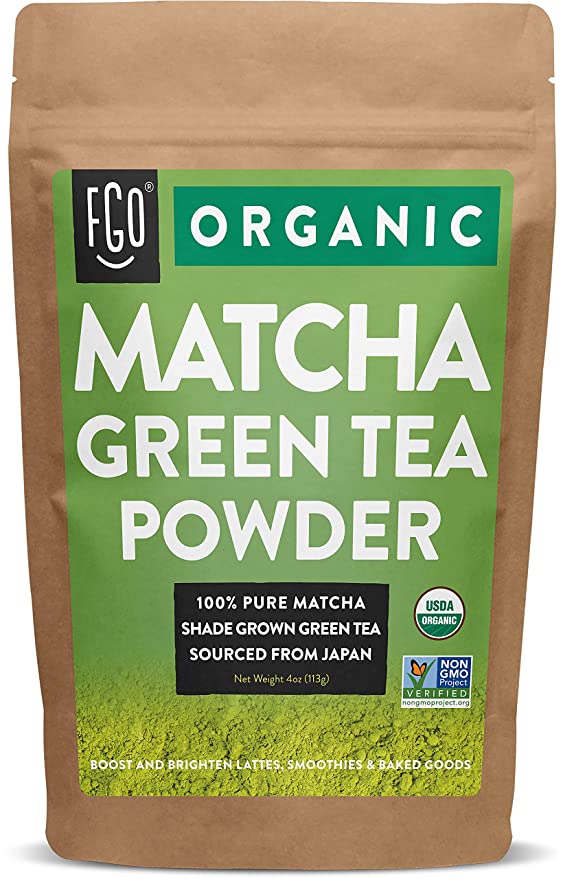
FGO’s organic matcha powder is another Culinary Grade option for baking and mixing into other drinks like matcha lattes. Like Jade Leaf, FGO’s powder is a rare certified organic product consisting exclusively of shade-grown green tea powder. Even the 4-ounce bag provides enough green tea powder for over 100 servings of tea, though it’s best to use your tea sooner instead of later.
Beyond its organic qualities, FGO’s matcha powder is certified non-GMO and uses GMP techniques to ensure consistent quality. Although not a Ceremonial Grade powder, this option works well if you prepare it with the Koicha style and add the result to about six ounces of milk for a green tea matcha latte.
Unfortunately, FGO doesn’t list where in Japan they get their leaves. They may source from across the country and mix the matcha to create a consistent flavor, similar to how bulk coffee companies may mix beans from dozens of sources before roasting them.
#4 Pique Sun Goddess Ceremonial Matcha Sticks
Pique’s Ceremonial Grade matcha is one of the top options for drinking in the traditional method. This is a high quality product, but one thing that particularly stands out is the single-serve design.
Most matcha comes in large bags, but that risks oxidizing and lowering the overall flavor over time. Using single-serve sticks adds more packaging but maintains the quality. We like this overall, but it’s also worth noting that you can only open and use these in predetermined amounts, so it’s harder to get a different-sized cup.
Pique sources their matcha exclusively from Kagoshima, where the rich volcanic soil helps support the growth of tea plants without pesticides or fertilizers. They also have an extensive testing process, with multiple checks for contaminants like mold, heavy metals, and even radioactive isotopes.
Pique’s green tea sticks are more expensive than some competing products but still more affordable than buying green tea at many coffee shops. Pique also sells this matcha green tea in a single large tin, but for pure quality, the prepackaged sticks are fundamentally better.
#5 Mighty Leaf Organic Matcha Powder
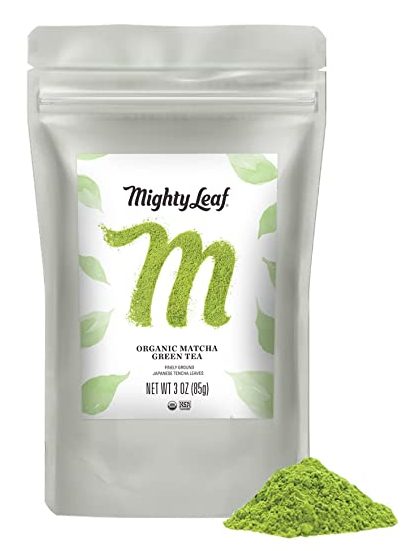
Mighty Leaf is another certified organic producer. While their prevalence on this list may imply that organic matcha is common, it’s important to remember that most providers are not certified, so these products are closer to being the exception than the rule.
Mighty Leaf sells matcha green tea grown in Shizuoka, which we discussed earlier as being the primary tea-growing region of Japan. This particular matcha powder blend tends to have a creamy body and a slight marine flavor, as its growing area is near the sea.
This particular product works best for casual daily drinking. Mighty Leaf recommends one teaspoon of matcha powder to 8 ounces of hot water or 16 ounces of cold water, which are 1:48 and 1:96 ratios, respectively.
As you may recall from our earlier discussion on matcha green tea flavors, traditional preparation involves a 1:4 or 1:12 ratio. Mighty Leaf’s recommended mixing method is significantly more diluted and better described as a matcha-flavored drink than actually being matcha.
That’s not fundamentally a bad thing. While many people enjoy the small, concentrated cups of matcha from traditional preparation, others want to have a lot of water with a bit of vegetal flavoring to it. That’s what this product specializes in. Mighty Leaf has advertised this as “Usucha” in the past, but their actual recipe is too diluted to qualify as that.
What We Look For In Matcha Powders
We look for several factors in the best matcha green tea. Not every tea meets all of these factors, but those that do tend to be better.
Origin: Most of the best matcha powder comes directly from Japan, where people have made it for hundreds of years. Matcha green tea is a crucial part of the storied tea ceremony, and serving low-quality matcha would be a deeply offensive insult to guests. The tea ceremony isn’t as popular today, but Japan’s focus on quality production techniques remains.
Grade: Broadly, there are two grades of matcha powder that matter when you’re going shopping.
The first option is Ceremonial Grade, which is the version that’s better for drinking. Although definitions vary for what constitutes this grade, most people accept that Ceremonial Grade matcha should be made from the youngest leaves and ground with stone to keep them cool during the production process. Unsurprisingly, this is the more expensive type of matcha powder.
The other choice is Culinary Grade. Culinary matcha is ideal for mixing in baked goods and other products, rather than putting it into hot water and drinking it straight. It tends to have a powerful flavor so that you can still taste it after mixing the matcha powder with other ingredients. If the flavor is subtle, it might get lost. Culinary matcha is far more affordable than Ceremonial.
For clarity, we’re not saying that one grade is inherently better than the other. They have different purposes. However, it’s always better to get the grade of matcha that matches what you want to use it for.
Flavor: The flavor of matcha varies based on several factors. This is complicated enough that it’s going to get its own section.
Factors Affecting Matcha’s Flavor
Seven major things affect the final flavor of matcha, and learning how to balance these is key to enjoying the best drinks and baked products.
#1: Type of Water
Matcha usually tastes best with fresh spring water, which helps to bring out the natural flavors. This is what people in Japan often had access to when preparing matcha centuries ago. The natural minerals in the water help improve its overall taste.
If you don’t have access to spring water, filtered water is an acceptable substitute. Filtered water will reduce the flavor a little bit, but it will allow you to enjoy the tea’s natural taste.
Well water and hard water are poor choices for matcha. These tend to have too many minerals and spoil the subtle flavors of matcha. They also tend to have bad aftertastes, so the best plan is to avoid them unless you have no other option.
#2: Water Temperature
Water for matcha should not exceed 80 degrees Celsius (about 175 Fahrenheit), which is well below the boiling point. If possible, use a temperature-controlling kettle to boil your water, remembering that the water will cool when you transfer it to a cup.
If you don’t have a kettle, you can heat water using a stove or microwave, then use a thermometer to check the temperature. Let the water sit for a few minutes to cool if necessary.
Boiling water is bad for matcha because it brings out all the bitter flavors. Hot water, but not boiling, makes for a significantly better drink.
#3: Matcha-to-Water Ratio
Matcha usually works best if you use an exact ratio of matcha powder to water. If you have too much water, the resulting drink is thinner and washes out the flavors. If you don’t have enough water, the result is too strong.
The best ratio is known as Koicha, which translates roughly as thick tea. The name’s no joke, as this tea is closer to a thick soup than a regular drink. Koicha has a ratio of about 4 grams (2 teaspoons) matcha powder to 40 milliliters (2 tablespoons + 2 teaspoons) of water, or roughly 1:4 tea/water.
Many manufacturers make tea specifically for Koicha, emphasizing sweetness and umami while reducing bitterness. These teas tend to use the 昔 kanji, or mukashi, which means “ancient times” and refer to its status as the classic way of drinking matcha.
The other ratio is Usucha or thin tea. Usucha is 2 grams (1 teaspoon) of matcha powder to 60 milliliters (slightly over 4 tablespoons) of hot water, or a 1:12 mix of tea to water. You can use almost any type of matcha for this, but stores usually mark it with the 白 (Shiro/Shira) kanji.
In the context of matcha, 白 means normal. Usucha is the standard for everyday drinking, being about three times thinner than Koicha and offering a light, flavorful drink. Some people dilute it further to taste, but formal settings and restaurants usually stick with the classic ratios.
#4: Origin
While tea is grown worldwide, the best matcha tends to come from Japan because they grew plants specifically for it. However, taste is largely subjective, so it’s difficult to cite any one place as universally better than any others.
The culmination of factors in a growing region is known as terroir, a French term that roughly means having a distinctive sense of taste associated with that region. While the term originally referred to wine, it also applies to tea and the way things such as exact growing location, weather, soil type, amount of shade, and specific plant varieties all contribute to flavor.
Uji, part of the Kyoto Prefecture in Japan, is often heralded as the birthplace of matcha. That’s debatable because Japan imported some of the techniques from China, but they eventually made it their own process. Uji Matcha tastes bright, savory, and slightly creamy, but since it’s considered high-quality, it’s also notably more expensive than matcha from other regions.
Fukuoka Prefecture, in southwest Japan, also produces some good matcha. Matcha from this area tends to have a deeper flavor, with savory and sweet elements mixed in.
Shizuoka Prefecture isn’t specifically known for matcha, as other areas have higher-quality powdered tea. However, it’s the largest tea-growing region, so matcha powders from here are relatively cheap while still having a grassy, sweet, and moderately bitter flavor.
Kagoshima Prefecture stands out because of its volcanic soil, which provides a distinctive twist on matcha’s flavor. Tea here tends to have bitter, sweet, and savory elements, all backing a more noticeable vegetal taste than you’ll find in other areas.
Nishio, within Aichi Prefecture, is a particularly fertile tea region that produces excellent matcha powders. Matcha from this area tends to be sweet and savory, with a somewhat stronger vegetal note than Uji. It’s lighter and not nearly as bitter as matcha from some other areas, but like Uji, it also trends toward being expensive.
#5: Grade
We discussed this earlier, but grade has a significant impact on matcha’s flavor. Ceremonial is the best for Koicha, but you can use any grade of matcha for Usucha. Don’t be afraid to experiment with ratios and dilute Culinary Grade matcha a little more if you plan to drink it.
#6: Organic
Organic tea is usually the best choice, regardless of what other factors you’re looking for. Matcha involves using the entire ground tea leaf, so if there’s anything like pesticide residue on the leaves, you’ll be consuming that.
Unfortunately, organic matcha from Japan can be hard to find, at least by US standards. Only a tiny percent of Japanese farms are certified, though more are currently seeking certification, and this may be easier to find in the future.
#7: Added Flavors
Many companies produce matcha with various added flavors. This can include some sugar to reduce bitterness, but it’s also common to see dried fruits, berries, and similar products added to matcha to produce a fine drink. Classic matcha preparation avoids any added flavors, but unless you’re in a formal environment, it’s fine to drink what you want.
#8: Natural Flavors
Matcha’s flavors vary somewhat depending on the growing region. Most matcha has elements of six primary flavors that mix to create the final taste. It may be hard to distinguish these at first. However, if you keep drinking different types of matcha, you’ll start to notice the differences.
The central flavor in most matcha is vegetal, which is similar to other edible greens like spinach, peas, or asparagus. This isn’t a surprise because tea is leaves, but the vegetal flavor is more pronounced in matcha than in most other teas.
Matcha may also taste nutty, like almond, pine nuts, or cashews. Higher-quality matcha tends to have more noticeable nutty flavors, with a bit of earthiness.
Most matcha is also sweet, although this can vary by growing region. The highest-quality matcha tends to have little or no bitter elements to it, especially if you prepare it correctly. Matcha’s sweetness resembles brown sugar or toffee but shouldn’t need an extra sweetener to come out.
Japanese matcha often has marine flavors to it, being slightly salty and resembling ocean air or seaweed. This is mainly because most growing regions in Japan are close to the sea. Matcha from China tends to lack these elements as it’s grown more inland.
Great matcha also has umami, which isn’t as well-known in western areas. Although famously hard to describe, umami is often called savory. Umami flavor tends to come from glutamate, a fundamental amino acid, and Japanese green tea, in particular, has a high amount of glutamate in it.
Finally, matcha may have a floral element in it. The floral flavor tends to replace nuttiness, although it’s easier to pick out if you’re used to drinking flower-based teas.
#9: Mixing Method
Even the method of mixing matcha can affect its final flavor. In most cases, the best flavor of matcha requires using a bamboo whisk known as a Chasen and mixing it in a zigzag motion until you have a slightly frothy tea. Metal whisks tend to create a more bitter flavor, so they aren’t nearly as good.
#10: Grinding Method
The best matcha comes from grinding the Tencha (tea leaves grown specifically for matcha) in a fine stone mill. The best mills use granite, which has minimal heat and friction while moving. Proper grinding creates a fine powder that’s easy to mix into drinks. If grinding is poor, the leaves will oxidize, ruining the overall flavor.
In Summary
As you can see, many factors go into the final flavor of matcha. Errors at any step can create a drink that’s bitter, boring, or stale. It can be hard to prepare matcha perfectly the first time you try it, so give yourself time to practice and master the skills for creating a great cup.
If you’re unsure where to begin, use regular matcha and prepare it with the Usucha method. This gives you time to develop your whisking and mixing skills.
Frequently Asked Questions
Here are some common questions that people have about the best matcha tea.
Which grade of matcha is the best?
The best grade of matcha depends on what you’re using it for. As a general rule, the Ceremonial Grade is better for drinking and formal environments, while Culinary Grade is better for baking, smoothies, and matcha lattes. You can also use Ceremonial Grade matcha for the Usucha mixing process, where the higher ratio of water covers the difference in flavor.
Unlike many other products, matcha has no universal best grade because different matcha is suitable for different situations. Ceremonial Grade matcha tends to have a milder and subtler flavor, and while that’s delicious on its own, it’s often too faint for a sweet dessert.
Some companies also advertise Industrial Grade matcha. As the name suggests, this isn’t directed straight towards consumers. Instead, it’s more common as a supplemental ingredient in vitamins, beauty products, and similar things.
How can I tell the quality of matcha after brewing it?
High-quality matcha has a bright emerald color, smells somewhat like grass, and has a sweet, smooth, and savory flavor to it when you prepare it. Lower-grade matcha tends to have a duller appearance, might be yellowish, and tastes bitter regardless of how you brew it.
How much matcha should I drink per day?
Most people drink 1-2 cups of matcha per day. Matcha does have caffeine, so drinking too much can harm your body, just like drinking too much coffee. Three is about the most matcha anyone should have in a day, and preferably with no other caffeinated drinks on the side. Five is the absolute highest you should ever go.
When enjoyed in moderation, matcha is safe, healthy, and delicious. It is possible to have too much of a good thing, though.
Non-organic matcha is also riskier because it may have pesticides or other products. If you’re not buying certified organic matcha, we suggest limiting yourself to one cup a day just to be sure. In this context, one cup means one serving of matcha powder, regardless of how much liquid you’re using.
What’s the best way to store matcha?
The best way to store matcha is in a well-sealed container in your refrigerator. 100% matcha is essentially a vegetable, similar to lettuce, as it’s literally a leafy green. Keeping the container sealed will help prevent oxidation and maintain the overall flavor of your powder.
Generally, try to keep matcha in a cool, dark, and dry environment. Matcha does not freeze well, so that’s not a good option for long-term storage.
How long does matcha last before opening?
Matcha can last about a year after grinding, assuming proper storage. After that, you’ll notice a significant reduction in its overall flavor and color. Remember, matcha is close to being a leafy vegetable, and just like vegetables, it will eventually go bad even if you don’t open it. That’s why it’s always better to use matcha shortly after you get it.
How long does matcha last once opened?
Most matcha will last anywhere from a few weeks to a few months once opened. Past this point, you’ll notice a significant drop in the overall aroma, flavor, and even color of your powder. This may not be noticeable if you’re only using a small amount of matcha in a smoothie, but it will make a major difference if you’re preparing it through traditional methods.
What does matcha taste like?
The exact flavor varies based on many factors, as we discussed in great detail above. That said, matcha generally has a vegetable taste with supporting sweet, nutty, and savory notes.
High-quality matcha has little or no bitterness, but lower-quality powder or poor preparation methods can bring out some bitterness.
How much caffeine does matcha have?
The actual amount of caffeine in matcha may vary depending on the preparation method. On average, matcha will have around 30 milligrams of caffeine per teaspoon. One teaspoon of matcha powder is one serving.
For comparison, an average 8-ounce cup of coffee has around 95 milligrams of caffeine, or three times as much as matcha. Espresso has somewhere near 63 milligrams of caffeine but with much less liquid, so it’s more concentrated.
According to the FDA, caffeinated soft drinks usually have around 30 to 40 milligrams of caffeine in them, making them comparable to matcha.
Should I have milk with matcha?
While many people enjoy matcha lattes (matcha with cow’s milk), we prefer avoiding that. Milk can interact poorly with matcha, binding some of the good nutrients and preventing your body from being able to make use of them.
This isn’t a problem if you’re using plant-based milk substitutes like almond milk, soy milk, or oat milk, so consider using those if you want a matcha latte.
How do I prepare matcha correctly?
Preparing matcha is a multi-step process, and it’s easy to get wrong until you’re used to it. If you want to enjoy the best matcha tea in its ideal form, though, it’s worth learning.
Start by sifting the matcha into a mug. Even well-ground matcha can clump together, which makes proper mixing harder. Sifting your powder before you drink it will ensure it’s as even as possible before starting the rest of the process.
Next, pour hot water over the powder. The ideal temperature is about 176 degrees Fahrenheit (80 degrees Celsius), which is far enough below the boiling point that it won’t bring out the bitter flavors.
Once you add the water, whisk it with a bamboo whisk. Using bamboo is essential because metal whisks don’t work the same and tend to release minerals that can distort the flavor of your drink.
Also, make sure you whisk in a zigzag pattern. This helps disperse the powder more evenly and creates a foamy layer on the surface that we want to see. Don’t whisk in a circular motion like you might for many other recipes.
Circular whisking is bad for matcha because it doesn’t create the foam that indicates a properly-made cup.
Finally, add more hot water for a thinner drink. Many people start with just the smallest amount of hot water and only add the rest once the powder is mixed in properly.
Remember that traditional matcha is a much thicker drink than you may be expecting, even in the thinner Usucha preparation method. Think of traditional matcha as closer to a shot of espresso than a cup of coffee. It’s a small drink that you sip rather than a large drink to gulp down.
Of course, this only applies if you want the traditional experience. It’s perfectly fine to have a larger cup if that’s what you prefer. Just remember to avoid having too many servings of matcha powder per day.
Can I buy matcha in tea bags?
No. Matcha is only available in single-serve packages or bulk containers, usually in a tin or bag with a liner that stops the powder from absorbing flavors or smells. Unlike traditional tea, you consume the entire leaf with matcha, and tea bags would interfere with that.
What’s the difference between matcha and instant green tea?
Some people confuse matcha and instant green tea, expecting these products to be largely interchangeable.
Instant green tea is usually a brewed drink that’s concentrated and dried into a powder. You can add more hot water later to get the nutrients back and have tea whenever you want. Instant green tea does not have the whole leaf but may include additives like sugar or preservatives to help maintain a particular flavor.
Matcha is made exclusively by grinding up tea leaves after removing the stems. The matcha powder itself isn’t brewed into anything else first, so it retains all of the nutrients.
With normal preparation ratios, matcha has a significantly stronger flavor than instant green tea.
Despite their similarities, instant green tea and matcha are not interchangeable products. If you prepare one expecting the other, you may end up with an unusually strong or weak drink.
Can I prepare matcha without a bamboo whisk?
Yes, but we don’t recommend it. The whisk makes a real difference in the final texture and consistency of your drink. From a pure quality perspective, it’s always better to get the whisk and replace it as necessary. They’re not very expensive, either, so you can fit whisks into practically any budget.
However, if you don’t have a whisk, you can add one tablespoon of hot water to one teaspoon of matcha powder. Mix this (preferably avoiding metal tools) to create a smooth paste. From there, you can add more hot water, which will dissolve the paste and spread out the flavor of your drink.
This is never as good as mixing with the whisk, but it’s the best alternative if you have no other options.
Are contaminants a concern for matcha?
Teas from some regions may be contaminated with heavy metals. This is more common in tea from China, although it’s not universal and generally not present in more popular products.
In general, matcha powder from Japan is safer and more likely to be screened for contaminants due to Japan’s famously strict farming regulations. These regulations are why most of our favorite blends are 100% sourced in Japan.
Should I have matcha if I’m pregnant or nursing?
Opinions vary on this, but Harvard’s School of Public Health notes that pregnant women should have less than 200 milligrams of caffeine daily (about 2 cups of regular coffee). One serving of matcha daily is not associated with a high risk of miscarriage or other pregnancy concerns. However, out of an abundance of caution, we don’t recommend having any more than that.
Nursing is a safer period, with experts recommending no more than 300 milligrams of caffeine. That’s about twice the maximum you should get, even if you have five cups of matcha a day, but be careful if you’re getting caffeine from any other sources.
Will matcha interfere with my medication?
Generally, matcha doesn’t interfere with medications beyond any effect caffeine may have. If you can’t have coffee with your medication, you probably shouldn’t have matcha, either. If coffee is safe, matcha probably is, too.
However, while that’s the general trend, the best option is to ask your doctor about potential interactions. We don’t know your personal medical history or what drugs you might be taking, so we cannot predict what interactions those might have with matcha. Your doctor has the training and knowledge to provide a better answer.
What are the different ways to enjoy matcha?
Matcha is a versatile ingredient, and you can enjoy it in many ways.
The traditional style is enjoying matcha as a hot beverage, with a relatively low ratio of matcha to water to ensure a thicker, delicious drink. If you still find it a little too bitter, a small amount of sweetener can customize the flavor. Honey, stevia, and maple syrup are all options if you don’t want to use regular cane sugar. People also enjoy adding milk to their matcha in place of the water to create a matcha latte. We recommend a non-dairy milk to maintain the benefits of ingesting the match powder
If you want to try baking, you can add Culinary Grade matcha to almost any bread-style dish. If you do, make sure to either sift the powder or mix it with a little water before adding it alongside the other wet ingredients. This will ensure you get an even distribution and flavor.
Matcha is flavorful on its own, so you don’t need to steep or infuse it to get enough flavor in your goods. You may want to add a little bit of sweetener and salt to make the flavor pop.
The correct amount of matcha will depend on your recipe, but about two tablespoons of matcha powder are appropriate for every two to two-and-a-half cups of flour in bread recipes.
For a different approach, you can add matcha to frosting and put it on the outside of cakes, cookies, or similar products. One teaspoon of matcha for every two cups of other ingredients is a good starting point for most frostings.
A common way of enjoying matcha is adding it to smoothies or other drinks. This is more for the health benefits of matcha than the flavor, which you might drown out with the flavors of fresh fruit, juice, or other ingredients. Adding one to two tablespoons of matcha powder per smoothie is the right amount.
More unusual ways of using matcha involve sprinkling it over yogurt. However, that involves dairy, which does somewhat reduce the nutritional value. If you add just a bit of salt, though, you can put matcha on eggs and fish.
Matcha has a fundamentally vegetal flavor to it, so it might work alongside any dish that you’d normally eat vegetables with.
Why is matcha so expensive?
Matcha is essentially a luxury product. It starts with limited production because making matcha requires covering fields and ultimately weakens the tea plants. This is manageable by giving them recovery times, but that reduces how much matcha you can create at a time compared to other types of tea.
Next, picking matcha leaves is labor-intensive and requires close supervision. After that, grinding is slow, with most machines only producing about 40 grams of matcha in one hour.
All of these limit the amount of matcha, but after all that, most of it stays in Japan because residents there use it for both drinking and baking. They’ve been exporting more in recent years in response to matcha becoming more popular overseas, but they still consume quite a lot domestically. That raises prices for overseas buyers due to consistently high demand.
What are the health benefits of matcha?
Matcha is a good source of antioxidants, helps boost metabolisms, and improves focus. As a caffeinated drink, matcha is a stimulant, and many people drink it as an alternative to coffee.
That said, matcha is not specially rated as medicine and is not rated to treat, cure, or manage any disease.
What is L-theanine?
L-theanine is one of the primary nutrients in matcha. Research associates it with numerous positive benefits when it’s absorbed alongside some caffeine, and it’s thought to be a significant component of the beneficial effects of tea.

